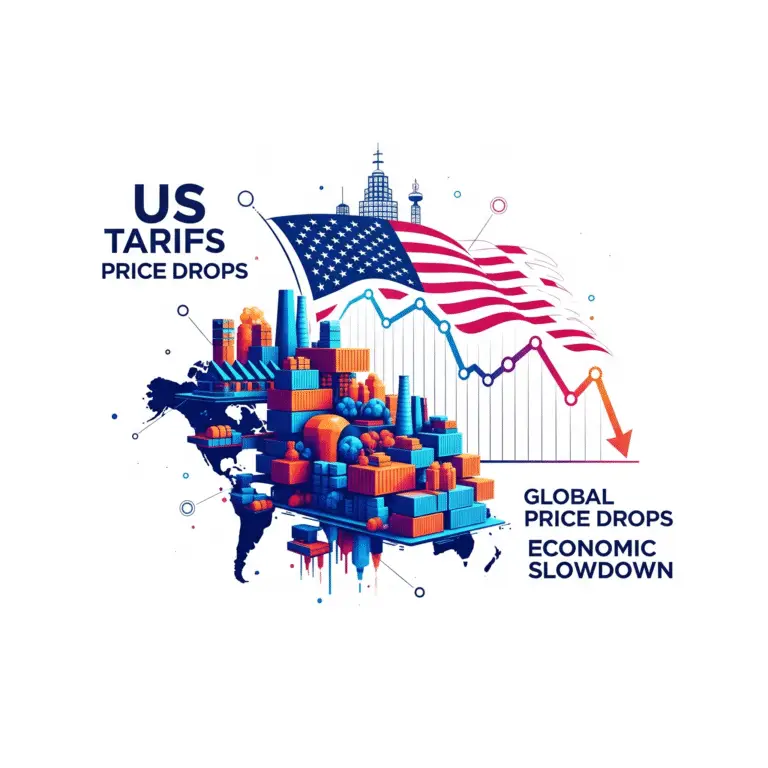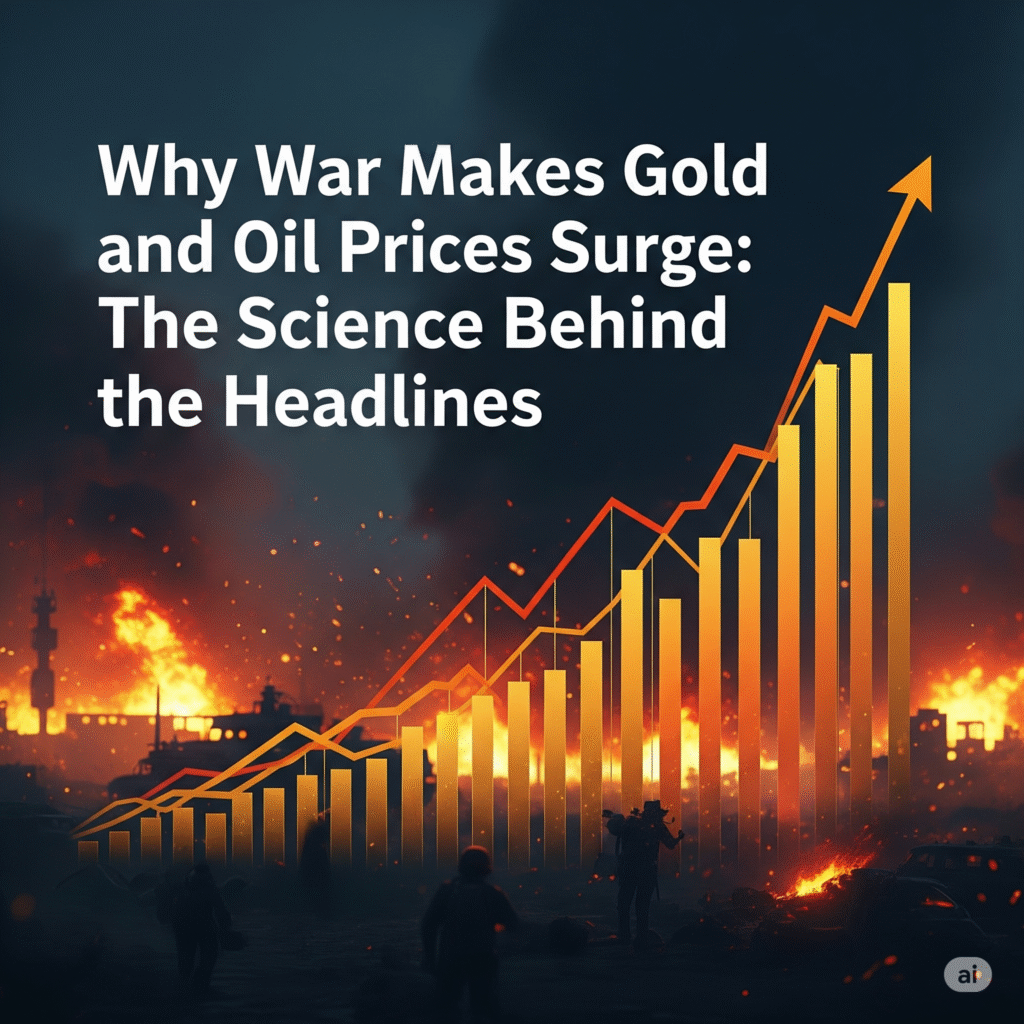Business

Big Surprise: US Tariffs Made Prices Go Down Globally in 2025
You’d think that when a big country like the US puts taxes on things coming into the country, prices would go up, right? Well, in 2025, the US did just that with a massive wave of taxes (called tariffs) on imports. But here’s the surprising part: instead of prices going up for everyday things, the cost of many raw materials around the world actually dropped. Let’s break down why.
1. The Massive US Tariff Plan of 2025
The US put in place some huge taxes on imports, the biggest we’ve seen in decades. Here’s what they did:
Wide Net: A general 10% tax on imports from most countries (over 180!) starting in April.
Steel & Aluminum Hiked: The taxes on steel and aluminum doubled to a whopping 50% in June.
China Hit Hard: Goods coming from China faced a total tax of up to 55%.
Neighbors Affected: Even Canada and Mexico had a 25% tax on most of their goods entering the US.
2. The Unexpected Price Drop Worldwide
Instead of inflation (prices going up), the world saw deflation (prices going down) for many raw materials. The World Bank预测(predicted):
A big 12% drop in global raw material prices in 2025.
Another 5% fall expected in 2026.
This means the prices of many basic materials went lower than they had been in a long time!
3. Why Prices Fell (The Surprising Reasons)
Here’s the main twist:
Slower Global Economy: When countries put up trade barriers like tariffs, it can make the whole world’s economy slow down. People and businesses worry, so they buy less stuff. This lower demand means prices for raw materials often fall.
Trade Troubles: The tariffs messed up how countries usually trade. Companies had to find new places to buy materials, which caused confusion and sometimes even less overall demand for certain things.
4. Who Were the Winners and Losers?
The impact wasn’t the same for everyone:
US Steel & Aluminum: Companies in the US that make these products did well because imported steel and aluminum became much more expensive.
Energy (Oil): Oil prices were shaky but are expected to be lower on average in 2025.
US Farmers: They struggled with higher costs for things they needed (like fertilizer) and couldn’t sell as much to other countries like China.
Brazil & Argentina: These countries sold more of their farm products to China because the US products became more expensive due to tariffs.
5. The Big Trade Switch-Up
Countries started changing who they bought from and sold to:
China & Brazil: China bought way more soybeans from Brazil instead of the US.
New Connections: China even started buying a type of animal feed from Argentina for the first time in years, as an alternative to the US.
6. What About the Prices We Pay in Stores?
Even though the prices of raw materials dropped worldwide, many everyday products in the US actually got more expensive. This is because companies had to pay the tariffs when they imported goods, and they passed those costs on to shoppers.
7. What Does This Mean for the Future?
These big US taxes in 2025 might cause some long-term shifts in how the world trades. Countries that depend on selling raw materials might have a harder time. They might need to find new ways to grow their economies.
Key Insight: The big surprise of the 2025 US tariffs was that instead of simply causing prices to rise in the US, they played a role in slowing down the global economy and, in turn, pushing down the prices of many important raw materials worldwide. This shows how interconnected our world’s economies are and how trade decisions can have unexpected consequences.

8 Core Principles for Achieving Millionaire Status in Your 20s (Without Traditional Investments)
To accumulate wealth without relying on traditional investments, particularly within the dynamic landscape of the USA, adopt these fundamental principles:
1. Solve a Genuine Problem
Identify a true market need or offer substantial value. In the diverse American consumer market, this involves understanding specific pain points or desires, whether locally or nationwide.
Real-life example: Jeff Bezos established Amazon by recognizing the internet’s rapid growth and the fragmented book market. He addressed the issues of limited selection and inconvenient access, building a global empire through unparalleled customer convenience.
2. Utilize Existing Resources
Leverage your current skills, networks, and assets. The American ethos of self-reliance often means starting with just an idea and your own initiative, transforming personal strengths into business advantages.
Real-life example: Bill Gates and Paul Allen used their programming expertise and understanding of software to create a BASIC interpreter for the Altair 8800. Lacking significant capital, their crucial skill set met an emerging demand, leading to the inception of Microsoft.
3. Prioritize Value Creation
Focus on delivering exceptional value to early customers to build reputation and loyalty. Providing outstanding service or products fosters trust, which is especially crucial in the interconnected US market through reviews and word-of-mouth.
Real-life example: Mark Zuckerberg initially developed Facebook as a connection tool for Harvard students, concentrating solely on utility and user experience within that exclusive community. This intense focus on delivering value to early adopters generated organic viral growth, setting the stage for its global expansion.
4. Embrace Frugality and Innovation
Be resourceful, utilizing free tools and DIY solutions. From open-source software to clever marketing tactics, minimizing overhead is essential for retaining every dollar earned.
Real-life example: Sara Blakely launched Spanx with only $5,000 in savings, creating her prototype by cutting the feet off pantyhose. Instead of expensive models, she modeled the product herself. Her creativity and extreme frugality enabled her to build a multi-billion dollar brand without external investment.
5. Master Sales and Marketing
Learn to effectively communicate your value and reach your audience organically. Given the extensive digital presence in the USA, this often involves strategic use of social media, content marketing, and online communities to build your brand without substantial advertising expenditures.
Real-life example: While not exclusively bootstrapped, early entrepreneurs like Steve Jobs excelled at presenting their products’ value. Jobs’s iconic presentations for Apple products were legendary for selling the vision and benefits, generating immense demand organically through compelling storytelling rather than just large ad campaigns.
6. Network Strategically
Cultivate connections for mentorship, referrals, and partnerships. Engage with local business chambers, entrepreneurial groups, and online professional networks to create opportunities and gain insights within the American business ecosystem.
Real-life example: Jan Koum and Brian Acton, the founders of WhatsApp, used their extensive network of former Yahoo colleagues to secure initial seed funding from friends and recruit early testers. Their tech industry connections were vital in launching their ad-free messaging app.
7. Practice Patience and Persistence
Recognize that this is a long-term endeavor, requiring resilience through challenges. The journey to millionaire status, particularly without external funding, demands unwavering dedication and the ability to learn from every obstacle.
Real-life example: Colonel Sanders did not achieve widespread success with KFC until he was 62, after years of experimentation and rejection. His persistence in franchising his fried chicken recipe, traveling across the US, exemplifies unwavering dedication despite repeated setbacks over decades.
8. Reinvest Profits Judiciously
Promptly reinvest earnings back into the business for growth. In the competitive US market, intelligent reinvestment allows you to scale operations, acquire superior resources, or expand services, fueling your progress without external capital.
Real-life example: Warren Buffett famously built Berkshire Hathaway by continuously reinvesting profits from his earlier partnerships and acquisitions back into the business. His philosophy of “compounding” wealth by systematically acquiring undervalued companies and holding them long-term, powered by reinvested earnings, is a prime illustration of strategic reinvestment.
Achieving millionaire status without external funding hinges on a relentless focus on value creation, resourcefulness, and strategic reinvestment of profits. What’s one of these principles you feel most confident in applying right away? Think_ Think_Think!!!

Why War Makes Gold and Oil Prices Surge: The Science Behind the Headlines.
Every time a major conflict breaks out, you see two things spike in the news: headlines about the war, and the prices of gold and oil. It happens so reliably you could almost set your watch to it.
But why? Is it just random panic, or is there a predictable science at play?
The truth is, the relationship between war and these critical commodities isn’t random at all. It’s a fascinating dance of supply, demand, and human psychology, grounded in solid economic principles. Let’s break down the science behind the surge.
Gold: The World’s Oldest Insurance Policy
Since the dawn of civilization, gold has been seen as the ultimate store of value. When war looms, this ancient instinct kicks into high gear. Economists call this a “flight to safety.”
Think of it this way: if your house is on fire, you don’t try to save the bulky furniture. You grab the small, irreplaceable valuables—cash, jewelry, important documents. In a global economic crisis, gold is that jewelry. Here’s why:
-
It’s a Shield Against Uncertainty: War creates massive uncertainty. Will currencies hold their value? Will banks remain stable? Gold doesn’t rely on any government or financial system to have value. It’s a tangible asset you can hold in your hand, making it the ultimate hedge when faith in paper assets falters.
-
It Fights Inflation: To fund a war, governments often have to print more money. History shows that when borrowing and taxes aren’t enough, turning on the money printer is the next step. This increases the money supply and leads to inflation, meaning your cash buys less than it used to. Gold, however, tends to hold its purchasing power, making it an attractive shield against inflation.
A Quick Look at History: This isn’t just theory.
-
During the 1973 Arab-Israeli War and the oil crisis that followed, the price of gold more than doubled from $85 to $180 an ounce as the US dollar weakened.
-
Amid the Iranian Revolution and hostage crisis in the late 70s, gold skyrocketed to a then-record $850 an ounce.
When the world feels unstable, investors instinctively run to the safety and stability that gold has offered for millennia.
Oil: The Lifeblood of Conflict
The story of oil is a bit different. It’s less about psychology and more about the brutal, physical realities of supply and demand. War hits the oil market with a powerful one-two punch.
-
The Supply Gets Squeezed: Most major conflicts happen in or near regions that are critical to the world’s energy supply. The war in Ukraine is a perfect example. Russia alone accounts for more than 10% of global oil production. When a major producer is suddenly hampered by sanctions, conflict, or damaged infrastructure, a huge chunk of the world’s energy supply is thrown into chaos.
-
The Demand Explodes: Here’s the twist. While a war might reduce civilian driving in some areas, military operations are incredibly thirsty. Tanks, jets, naval ships, and armored vehicles consume enormous amounts of fuel. This creates a sudden, massive spike in demand from the world’s most powerful militaries, right at the moment when supply is most vulnerable.
The Fear Factor: Oil markets are also driven by a “war risk premium.” Traders and nations start buying up oil not just for today’s needs, but because they are terrified it won’t be available next month. This fear itself drives prices higher.
Because there are few easy substitutes for oil, the market is incredibly sensitive. Research shows that even a 1% drop in the global oil supply can trigger a shocking 10%, 15%, or even 20% increase in price. The data from the Russia-Ukraine war confirms this, with studies showing the conflict accounted for over 70% of the price fluctuations in crude oil at its peak.
The Takeaway: A Predictable Storm
So, when war breaks out, you have a perfect economic storm:
-
A “flight to safety” sends investors flocking to gold to protect their wealth from inflation and uncertainty.
-
A supply-demand crisis hits the oil market, as physical supplies are disrupted while military demand soars.
The next time you see the prices for gold and oil climbing during a global conflict, you’ll know it’s not just market panic. It’s the logical, predictable outcome of powerful economic forces that have shaped human history for centuries.
